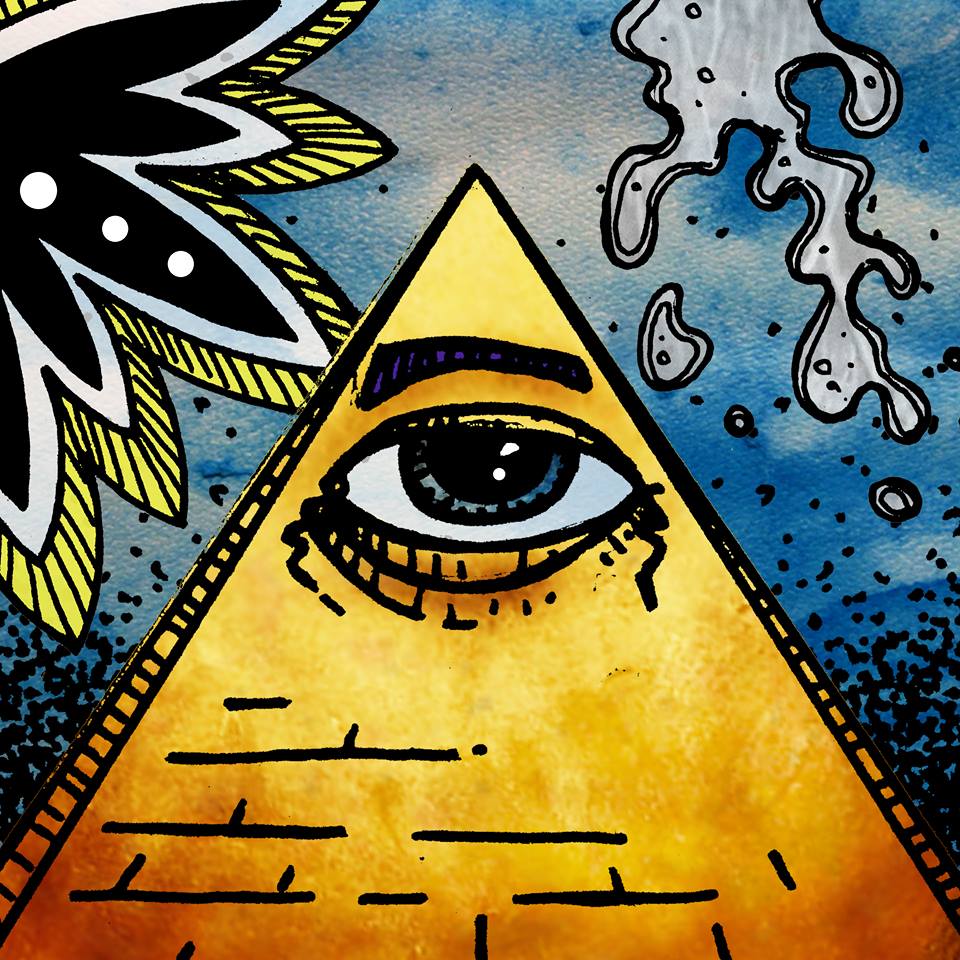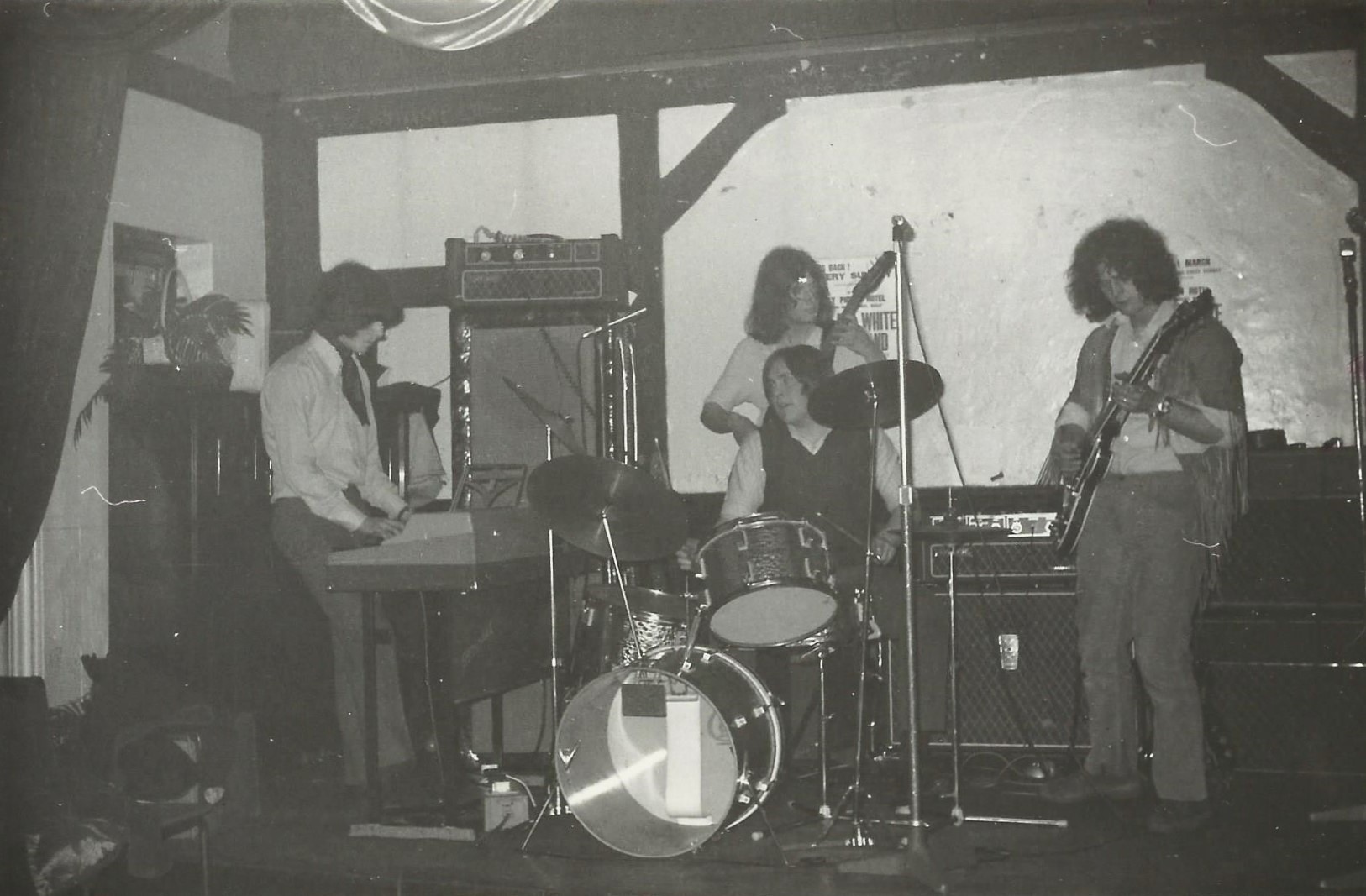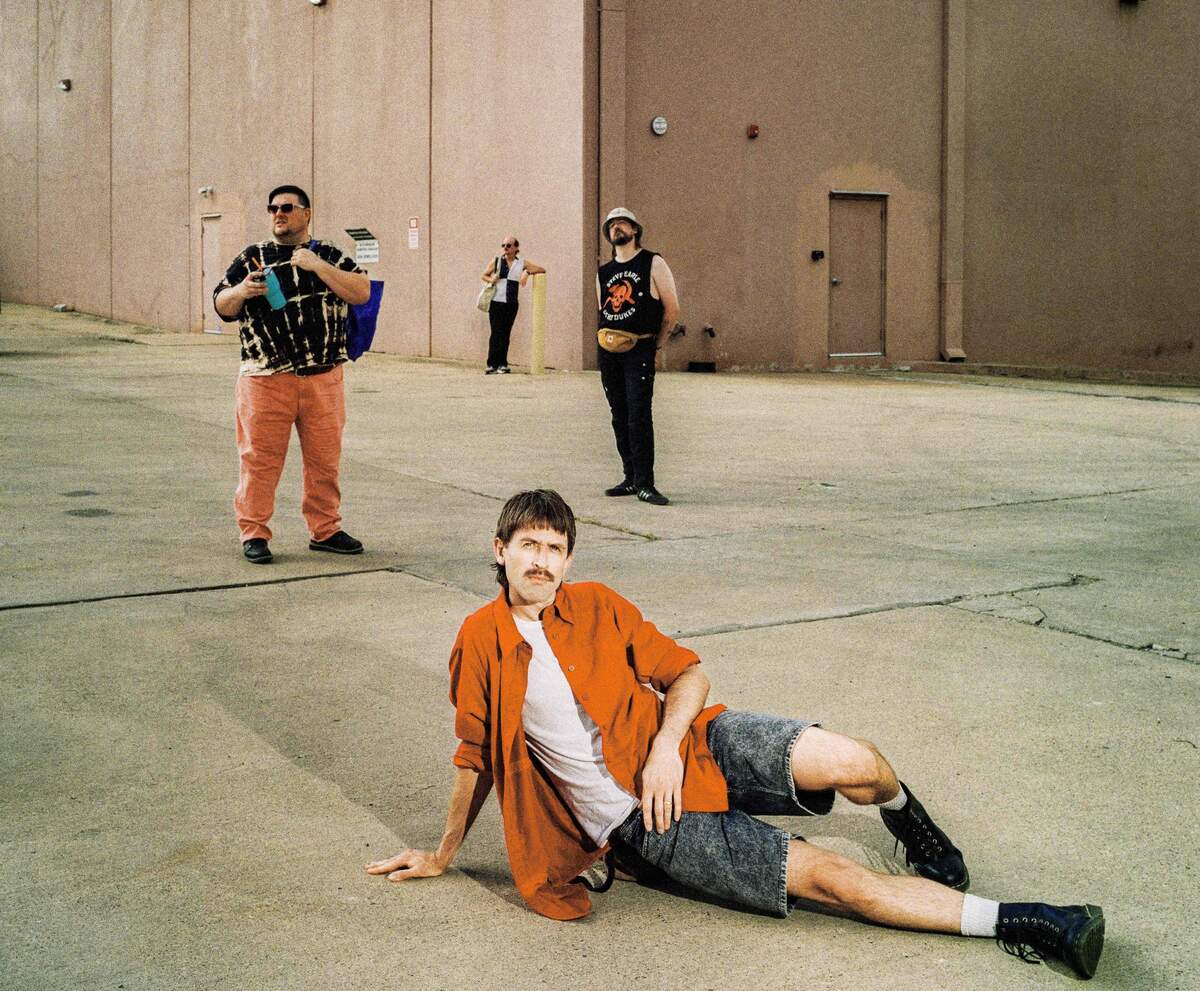Second Nature: A Long Buried 1970 Gem of British Blues Rock
In the late 1960s and early 1970s Britain produced an endless stream of local blues groups, many formed in school halls, pubs and youth places, most destined to disappear without leaving a mark on history.
Second Nature, a teenage band from the London suburbs, were part of this wave of young musicians who absorbed the American blues tradition and developed a remarkably confident sound. Their privately pressed album, recorded in a single afternoon in 1970, has now resurfaced more than fifty years later. What was once a modest personal project has become an extraordinary historical snapshot of an overlooked British blues rock.
The members of Second Nature were college friends from Harrow who bonded over records by T-Bone Walker and leading figures of the British blues boom. Like many young musicians of the era they learned from the albums they passed between friends, often spending hours dropping needles back to replay a single guitar lick. They played live across North London in student bars and community halls and in 1970 won a local competition at the Harrow Carnival. Instead of spending their prize money on equipment they booked a session at Sky Records, a small loft studio above a barn in Hertfordshire.
Working quickly and recording live to tape, they completed an entire album in one session. The band pressed a small number of copies for friends and local fans and soon moved on with their lives. The album drifted into obscurity until a collector discovered it decades later, revealing a vivid document of an ordinary British group making music simply because they needed to.
“As I remember it, we did everything as one live take.”
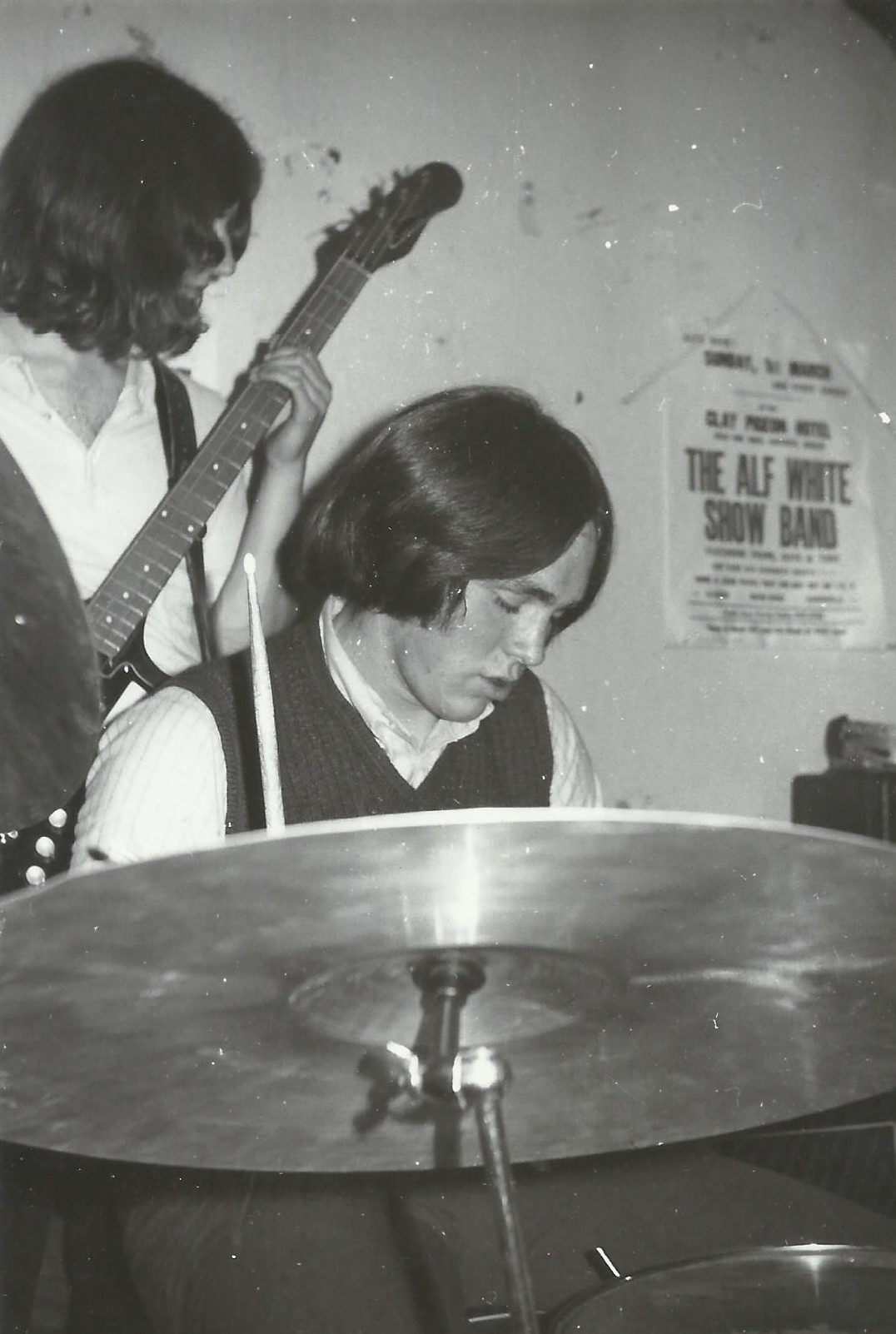
Would you mind discussing your childhood and formative years? Where exactly did you grow up, and what was that time and place like?
Tim Jones: I was born in Newcastle Under Lyme in the Midlands in 1952. My Dad came out of the Royal Air Force after the war and became a telephone engineer with the Post Office. My first memories are of living in a pre fabricated bungalow on an estate for Post Office workers. It was called Raleigh Hall. The week of my fifth birthday we moved to London with my Dad’s job, where he remained until he retired. So it was a fairly stable home life in the London suburbs, in Pinner to be exact.
I hated school. I think primary school damaged me for life with its strict regime of caning and slapping for the slightest thing. The only good thing about school was that I learned to play the viola there. When I went to secondary school at the age of twelve I carried on learning the viola for a while until my sister’s boyfriend gave me a guitar. It became an obsession. Any time of day or night I would pick up the guitar.
Social life revolved around the park and the streets. There was a patch of waste ground called the track that we used to cycle on and mix with slightly scary older boys. In my early teens I met Richard, the keyboard player, and a couple of others. We listened to records and played together at each other’s houses. We talked about forming groups but nothing concrete happened.
My introduction to the blues came from one of the American Folk Blues Festival LPs, possibly the 1962 volume. My Dad brought it home from a record library at his work. The biggest impression was a T-Bone Walker track. I copied every lick he played on it. He played some really nice long lines, and I used them when I got the chance to sit in with my uncle’s jazz band in Stoke on Trent.
Were you, or any other members of Second Nature, involved in any bands prior to its formation?
As far as I can remember, none of us were in bands before Second Nature.
What was the local music scene like back then? Were there particular places you enjoyed meeting up, discussing music, or perhaps hearing new material?
The 60s and 70s were a really good time for music. The John Mayall Beano album was released in 1966, in our mid teens. A friend, Tim Frost, became a real music fan in our final year at school. He introduced me to gigs run by the Student Union of Central London Polytechnic. I remember him leading us into the dressing room after a Fleetwood Mac concert. We watched them fooling around while having photos done. It was just after Danny Kirwan had joined them. I saw quite a few blues artists there over time including Freddie King, Howlin’ Wolf and Chicken Shack. Tim Frost got us tickets for the Woburn Abbey Festival, the summer of 1968. I do not know how we got there but I certainly remember getting home. On the final night they announced that we all had to leave the site immediately. We ended up walking down the M1 on the hard shoulder until we reached a service station. A police car stopped and told us to get off the motorway but it was impossible so when they had gone we trudged on. I am surprised they did not at least drop us off at an exit. It was a memorable night but worth it. Of all the acts, the two that stick in my memory were Jimi Hendrix and John Mayall. It is funny to think that I was to play with some of the members of that John Mayall band twenty years later. They were my heroes then.
Back in term time we would stop in a cafe on our way home from school and play the jukebox. Beck Bolero was a favourite. Sometimes we hung out in the record shop asking to hear records in the listening booth but got banned because we never bought anything.
Locally there was a club called The Commune in a scout hut in Rayners Lane near to my house. It was run by people our age and booked touring bands and local bands too. This was the time of hippies and as a hippie I was threatened with expulsion for selling the International Times at the college.
The music shop in Harrow was run by Sid Parsons. A few of us used to spend our Saturdays there, chatting and looking at the gear. Sid was happy for it to be a meeting place. I bought my first proper amp there, a Vox AC30. He also lent us gear when we needed it. I remained in touch with Sid for years.
By the time I went to Harrow College of Further Education to retake the exams I had failed at school, I was buying as many Freddie King and B.B. King LPs as I could afford. I remember the 1968 Ainsley Dunbar Retaliation LP ‘Doctor Dunbar’s Prescription’ really impressed me too. That is where we got ‘Now That I Have Lost You’ from. The strange thing is that the original B.B. King version seems to be called ‘Now That You Have Lost Me,’ which makes more sense for the lyrics.
I often spent the lunch hour in a record shop down the road in Hatch End. That is where I met David Williams, who designed the Second Nature LP cover.
As an indication of the different atmosphere in those days, we went backstage at a Chicken Shack gig at the Fairfield Hall and talked to Stan Webb. He told me to listen to Buddy Guy, which I did. Then he held up his fringed jacket and asked who wanted to buy it. Steven, a friend, gave him half a crown for it. Stan also invited us to the studio the next day to watch them recording, so we went along in the evening. At one point we were sitting in a side room as some people were leaving and they all thanked us. It turned out they were session musicians and they must have thought we were the band.
Who was in that first line up, and what was the catalyst for starting the group? Was there a specific concept or philosophy behind it?
To be honest, I am quite hazy about the beginning of the band. I know that we were a group of friends at college who spent time jamming together and hanging out. Somehow there was talk of starting a group and Mick Black, Jim Benson, and I formed the nucleus. Mick was a very good guitarist but he decided to play bass and Jim agreed to sing. Richard Vahrman and Mark Grainger were in the year below and still at school but somehow the five of us came together. Richard and I were already friends.
We started playing in the Students Union, a sort of coffee bar. I have a feeling it was all very casual and loose at first but it grew. I just remember Mick Black leaping around crazily on the small stage. Jim bought a van and we began to rehearse at the Railway Hotel in Wealdstone on Sunday mornings.
There came a time when we felt Mick had outgrown us. His musical taste had expanded beyond the blues so we parted company. That is an aspect of groups that I have always hated. John Slade was recommended as a dedicated blues player and he joined us on bass. He was older and more knowledgeable about the blues and life generally. I learned to invite people in for coffee after rehearsals from him. He was also a huge Chicken Shack fan. He loved the simple back beat.
Tell us the story about the Marquee and Upstairs at Ronnies shows and the encounter with Ronnie Scott. Who was on those bills and what was the audience like?
As we developed musically, friends at the college were really supportive. The Union booked us at their gigs and we began to play pubs and youth clubs locally. It was through someone at the college that we played Upstairs at Ronnies. I remember we hired Marshall stacks. I am sure they cost three pounds each and someone delivered them to where we were rehearsing. People were so trusting in those days. Most of the audience were our friends from college. Even so, it was an event for us.
As we were packing away on the pavement outside, an old man stopped and said something like, “Did you have a good time?” We nodded and thought, Who is this crazy man. Much later I recognised him as Ronnie Scott. I stole the board advertising us. It had a cartoon picture of an alien and our name fixed onto it. I also cut out the Melody Maker advert. Genesis were playing the following night. I kept both for years but not forever. They are gone now.
Although I am quoted as saying we played the Marquee, I have to say we did not. WEM had hired the Marquee to showcase their equipment and Richard was invited to go because he had bought a keyboard or something from them. This was when we were still at school, before Second Nature. We got a lift to the Marquee from a friend’s dad. My uncle, who happened to be visiting, came along to play drums and we got up on stage to play a couple of numbers. That was it.

What about the new pianist you got?
Tim Richards was mentioned by someone from college as a good piano player. He was not local and I do not remember the actual getting together with him, but his feel for the blues was instinctive. Along with John on bass we now had a genuine blues band. I do not think I realised it at the time. I was not analytical, I just enjoyed playing.
Tell us about The Harrow Carnival Competition. Tell the story of the Woodstock LP prize and the Sunday afternoon recording session at Sky Studios. Who at Sky approved the session time and what was the atmosphere like in the control room?
In the summer of 1970 a local DJ named John Green organised a pop competition at the Harrow Carnival. All the local bands took part and we played three numbers on the bandstand in the park. Sid Parsons from the music shop arranged the gear, which was supplied by Simms Watts. I told my parents they could not come but they did, secretly. Amazingly, we won. I was not expecting it and did not believe it when we were told later in the evening while we were playing at another gig.
The prize was fifteen pounds and a copy of the ‘Woodstock’ LP. We agreed to share the record by turns. I have no idea who ended up keeping it.
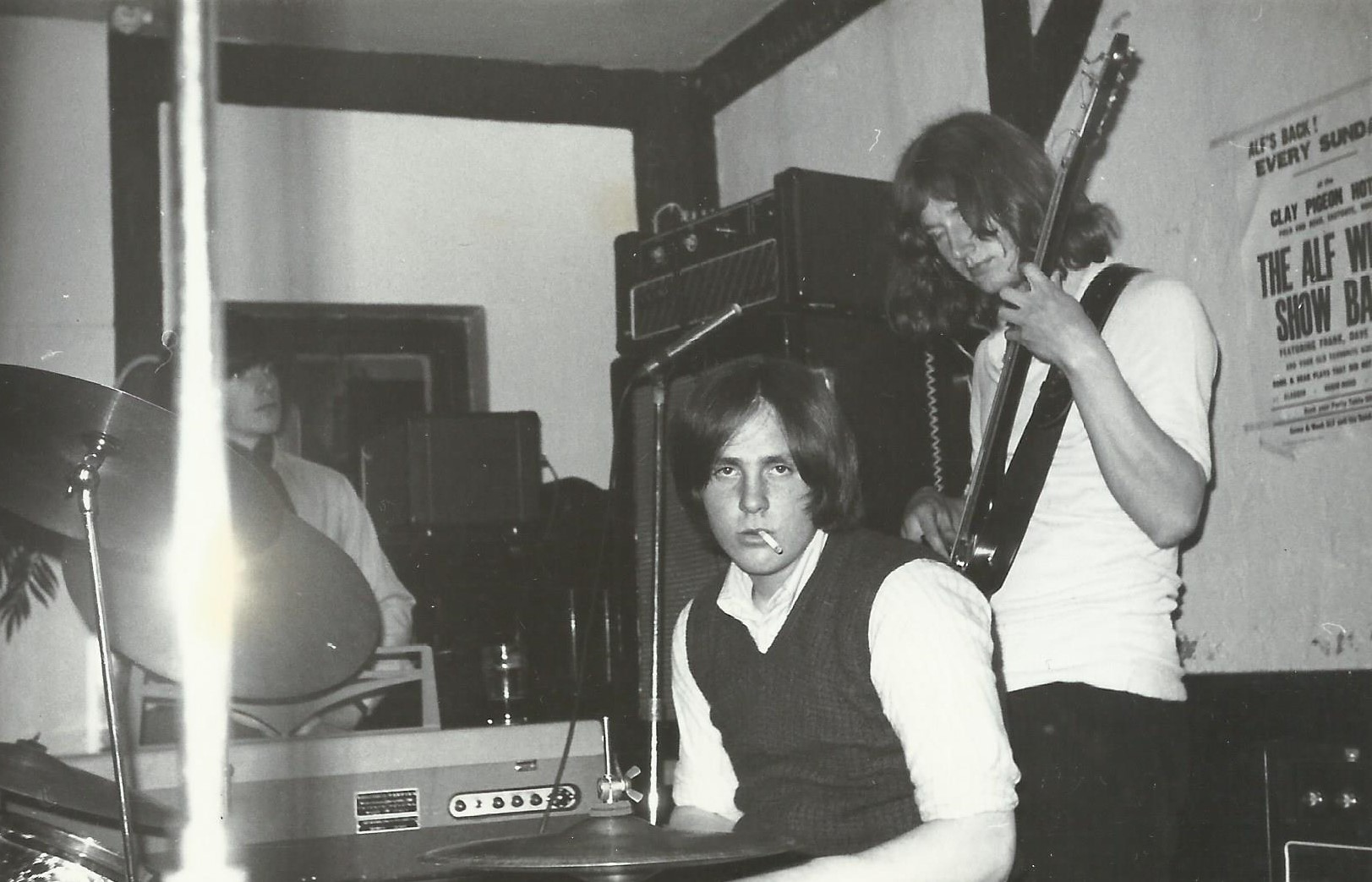
How did you develop material for the album? How did the Sky label and Sky Studios become involved? Who made first contact and what was agreed in writing at the time?
Mark suggested we spend the fifteen pounds prize money on a recording session with Sky Records. I think he had seen an advert for a recording session and printing of a number of the LP. So one Sunday afternoon in October 1970 we went to the studio. All I know is that it was in the region of Harpenden and the producer was David Richardson, who is now the owner of SRT. We loaded our gear up a ladder into a loft space above what I remember as a barn.
We recorded five original songs, one cover and two off the cuff numbers. It has always seemed odd to me that we did so few but now I am pretty sure that the studio advised us to avoid copyright problems by recording covers. We were scratching around for songs to do and we got Tim to play a piano boogie and then we did another rather boring jam. We had plenty of material for live sets so why not run off a few familiar numbers.
As I remember it, we did everything as one live take. For instance, I played an extra twelve bar solo in Now That I Have Lost You and cut the song short before Jim could sing the last verse. He was not too happy about it. We definitely had a limited time frame.
The sleeve was designed by David Williams, my old friend from the record shop near the college. He was working in a design studio by this time and he did it for free, including the printing.
I do not think we had any plans to use the LP for promotion. I did not consider that kind of thing at the time. We sold most of the thirty copies and maybe gave a few away. I guess we could have obtained more but thirty was included in the package for the fifteen pounds.
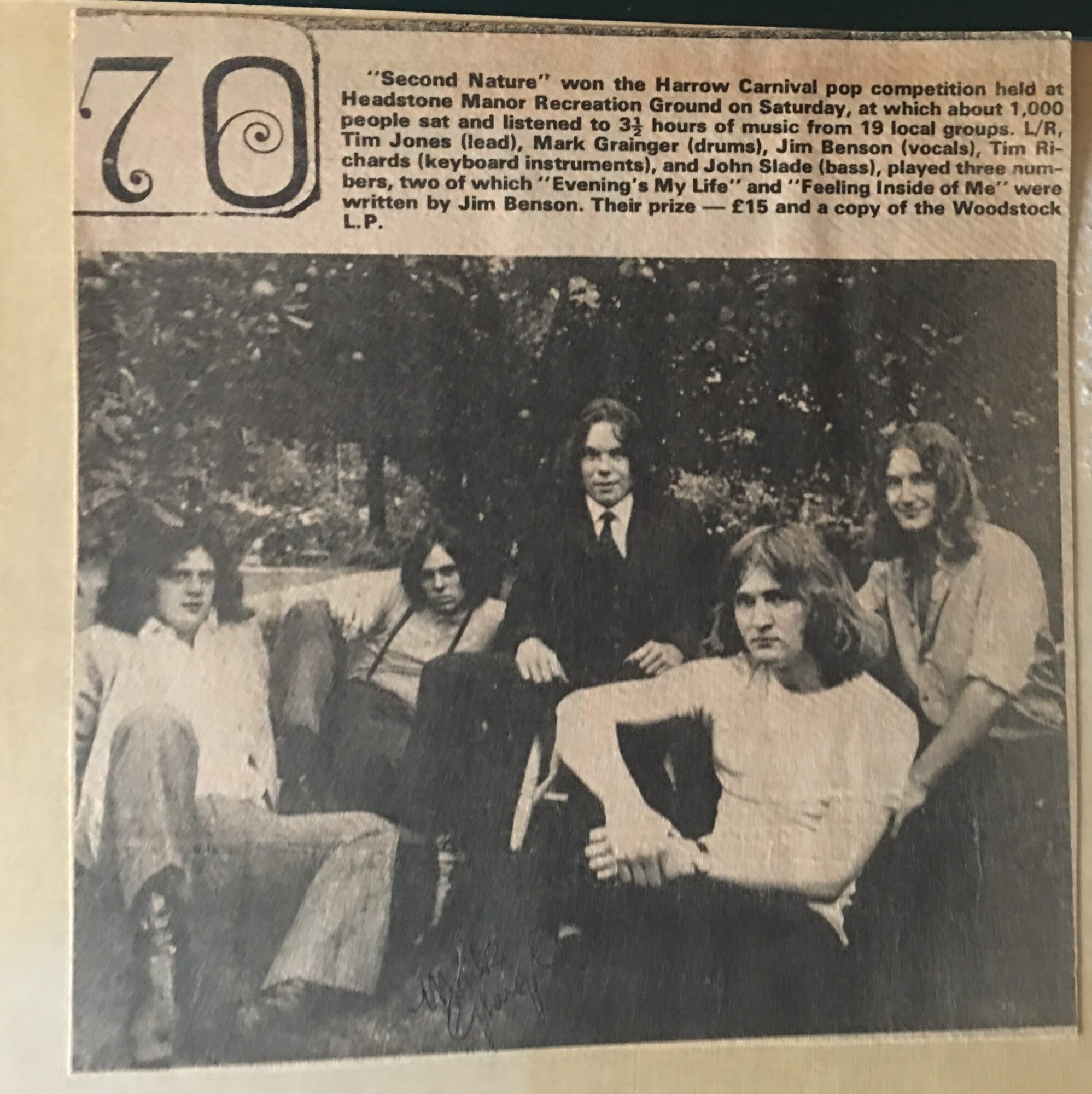
Would love to hear about your instruments and gear…
My first electric guitar was a Hofner Club 60. I had problems with the hollow body causing feedback so my Dad tried to fix it. For some reason the pickup ended up in our oven and melted, so he made a new mounting out of metal.
Next came a Gibson 335 in the late 60s. I traded that for a 1968 Goldtop Les Paul with P90 pickups. It had an incredible sound. That was around 1970. I kept it until the late 1990s when I sold everything. It was like leaving a baby when I left it at the shop.
I took up playing again while living in Spain and bought a new Les Paul Standard. I bought a Squier Stratocaster recently to use for rhythm guitar because I never found a good rhythm sound with the current Les Paul. I have a Spanish flamenco guitar built in Cordoba and an Epiphone electro acoustic.
After the Vox AC 30 and a Selmer Treble N Bass 50 of the 60s, some friends persuaded me to buy a Wallace XT 50 amp. They were hand made and had a great clean sound but very loud. The friends built a pair of four by twelve ridiculously large cabinets to go with it. I kept that until the end of the century.
The only sound that came near the Wallace was some Fender amps. I had a Fender Deluxe Reverb from the 70s and a Fender Bandmaster top. I have a Fender Blackface Deluxe Reverb reissue now. It is great for recording.

Could you tell us how your recordings resurfaced after so many years?
Jon Groocock from Bright Carvings, a record label specialising in unreleased material from the 60s and early 70s, came across a copy of the album on eBay. He held onto it for almost a year while trying to trace the band. Luckily Richard Vahrman’s name stood out in an advert he had placed in the local paper looking for a bass player. Jon found it in their archives and made the connection. Richard contacted me and I searched for the rest of the band except for Jim. From there it went on. I had not listened to the album for more than fifty years and did not really want to listen to it, but I think Jon has done an amazing job with the restoration and packaging. It has brought up so many memories. It just feels like a happy, carefree time back then.

Could you share some further details about the recording and production process? Where exactly did you record the material, and how were the songs written?
As regards the material, I would say Jim wrote most of the words. The musical ideas came from the band. There are some obvious lifts from Stan Webb’s playing. You only have to listen to the guitar licks in ‘Easy Man’ and ‘Wait Here Baby’. The accents and feel probably came from Tim Richards. Everyone had an input.
Why did the band split in June 1971?
There is confusion about the band splitting, certainly in my mind. Tim Richards says it carried on until June 1971 and I am sure that is true. But how it happened I am not sure. The only thing I can say with regret is that by that time I was playing in another band, Sourpuss, at the same time. It happened that both bands had gigs on the same night and I realised I would have to choose one or the other. It was a horrible decision to make but I left Second Nature. I thought I was making the decision based on who I would be letting down the least. That might not have been the end of the band. I do not know. We have never talked about it since.
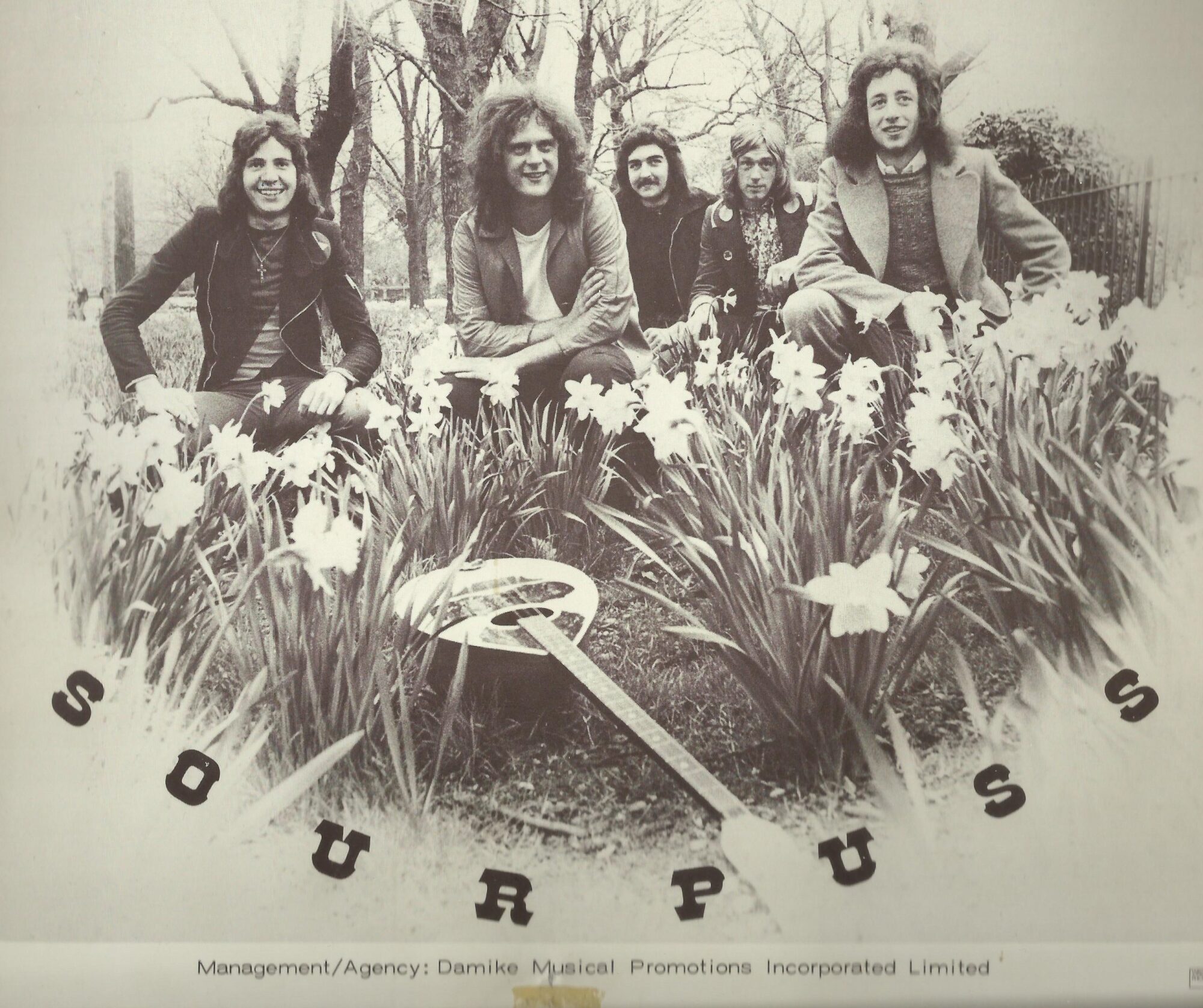
I know that Tim Richards went on to be a successful jazz pianist with Spirit Level and his own trio. John Slade continued playing bass with various blues outfits including the Nighthawks. Mark Grainger combined drumming with football, having been signed with Fulham FC as a schoolboy.
I went on to join Raw Energy with a release of a single on the Ariola label recorded at Chalk Farm Studio with an engineer called Vic Keary. I remember another session with Vic, recording a twelve inch reggae song. He did an amazing dub version for the B side. I was sold on reggae from then. It led to forming Soft Touch.

I felt with Soft Touch that we were on a crest of a wave. Things went well at first. We had an advance from MCA Records to record more material once they had heard our demo. The problems came as we were recording in a South London studio. An old school Tin Pan Alley fixer got involved and negotiated a deal with NEMS Records for us, getting himself a job in A and R at the same time. In the end we signed with NEMS. The single was printed, I still have a copy, the cheques started bouncing and NEMS went bust. That was the end for me. I had had enough.
Fortunately, in the early 80s I got a call asking me to join The Bluesblasters. John Holmes, an old friend, had passed my name on to them. This band developed into Mainsqueeze, at which point they substituted me for Eric Bell. The idea was to gather as many famous people as they could. Among them were Dick Heckstall-Smith, Victor Brox, Keith Tillman and Dave Moore. These four remained when the band was reformed and Keith asked me to rejoin a year later.
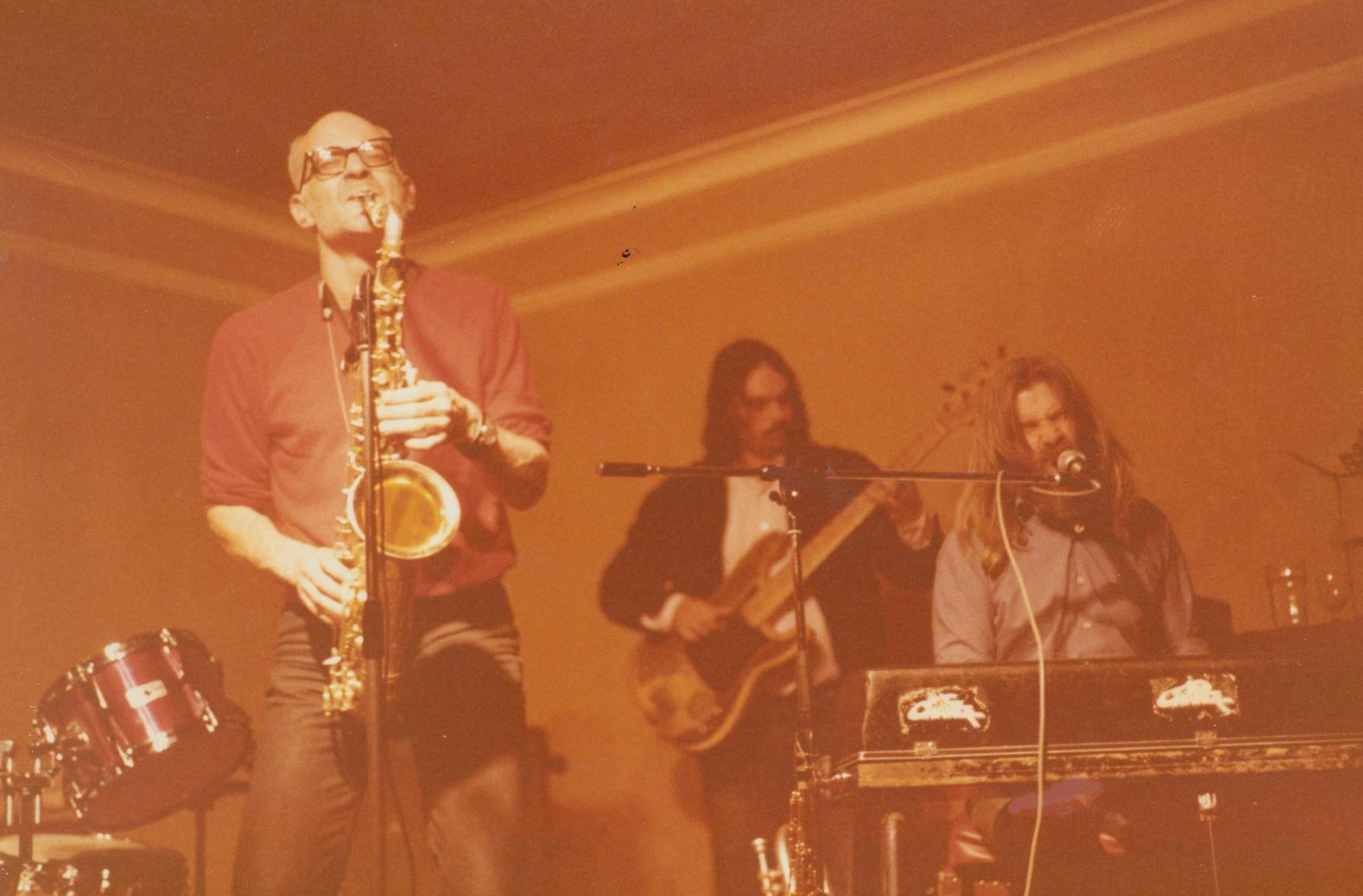
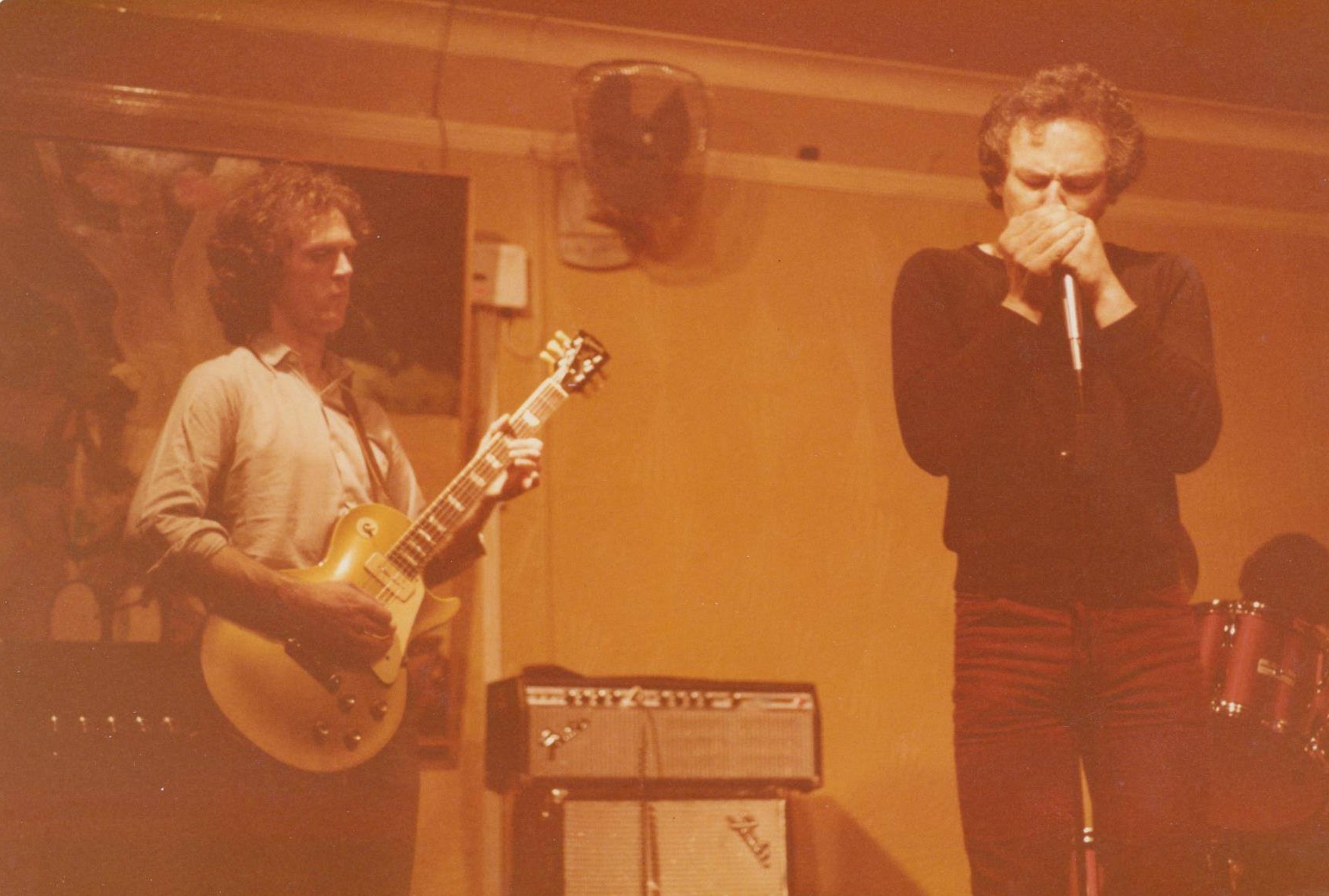
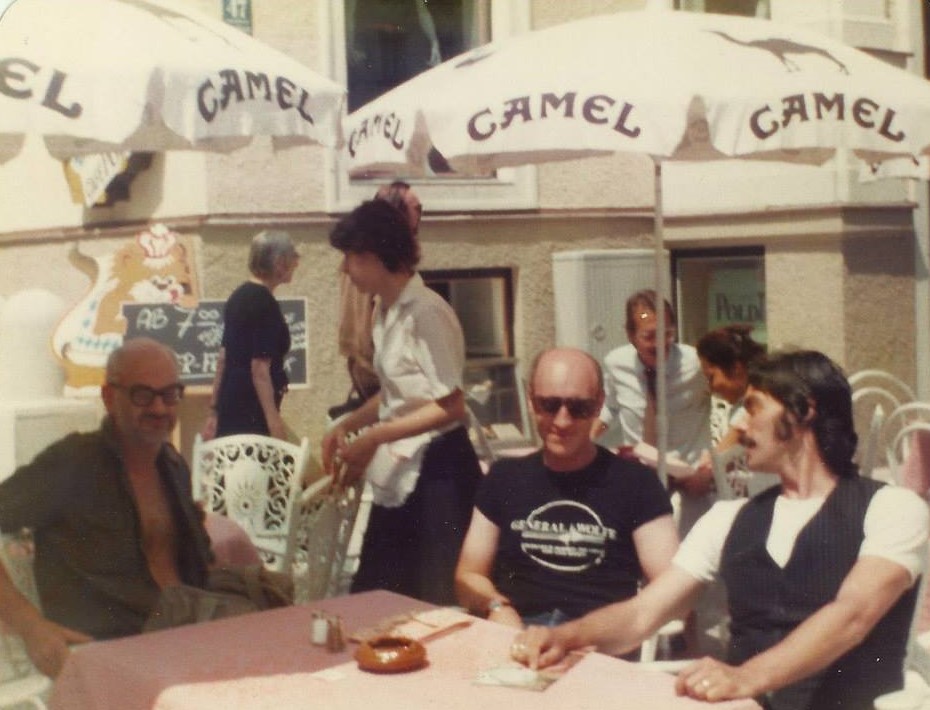
We travelled Europe and Scandinavia and played with some great names. An interesting gig was in a high security prison near Copenhagen. It was incredible. When we played the men were able to get up, help themselves to coffee and make a lot of noise but at the end there must have been a signal from the guards and there was complete silence. Then they filed out and one of them said to me, Do I know you from somewhere, in a strong Scottish accent.
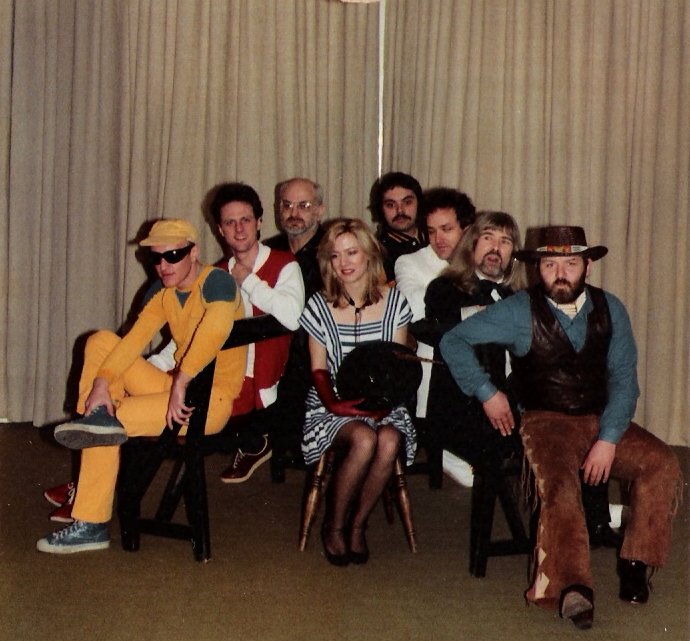
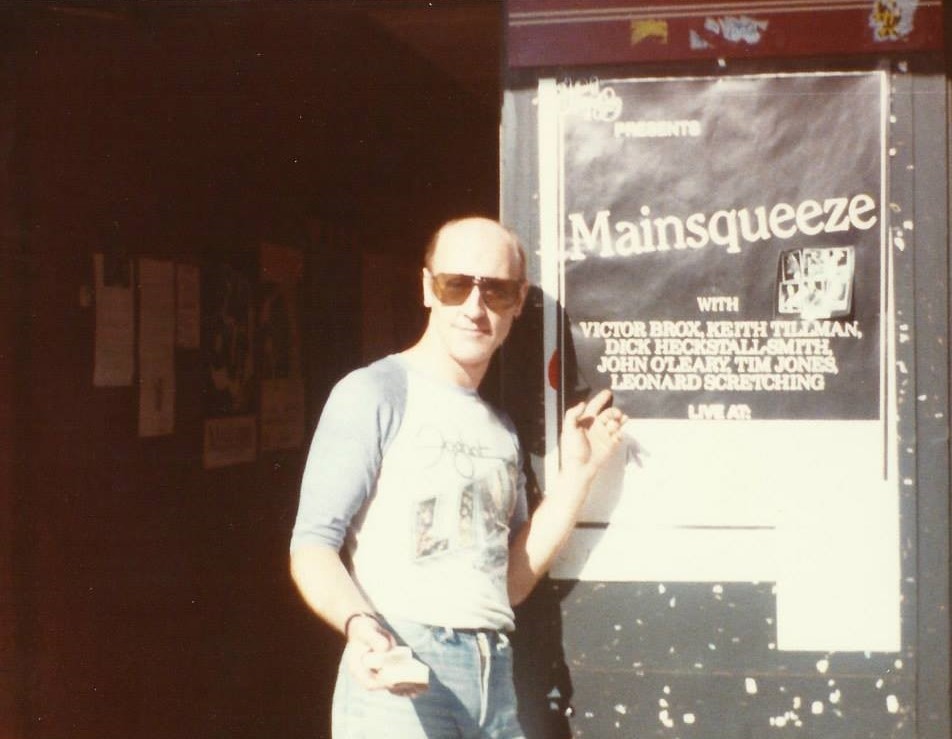
This led to the tour with Bo Diddley in the mid 80s, starting in England and covering a similar area as we had done with Mainsqueeze. Bo had the biggest hands I have ever seen. We stopped at my house on the way back to Dingwalls in London to make phone calls. Of course we had a cup of tea but his hands were too big to fit into the biscuit barrel. We had to tip them out.
Right now, since returning from life in Spain, I spend my time writing and recording material. I would have loved to have led a band here but the situation has changed so much over the years. I work on songs in my studio at home. It is not ideal, mainly because I am not a sound engineer, I am a musician. But I love what I do every day.
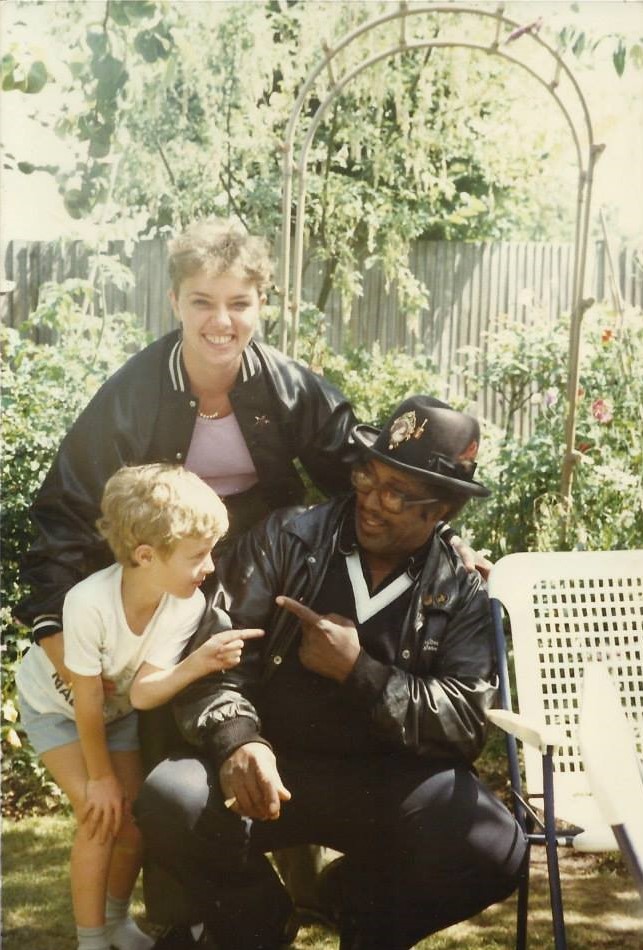

The sleeve mentions a manager who claimed contacts in England and Germany and organised a tour that never happened. Who was this manager? Why did band members refuse to go on tour?
Quite early on we were approached by someone about doing a tour of United States airbases in Germany. All I remember is that his name was Paul. He was a few years older than us and had a group of friends that included a girl with wealthy parents. She lived in a huge house with an old windmill in the garden. I do not think he really had any hope of pulling off his idea but we wanted to believe in it. He was full of schemes. I remember one time travelling down to Wales with his friends who were going to set up a surfing centre in an old pig sty they had acquired from a farmer.
The result was that I decided I needed to up my game by buying a Gibson 335. Richard left the band and we stayed where we were.

Were there other sessions, different line ups, or other albums that were conceived or partially recorded, only to be lost to the mist of time?
There is another recording we did in the very early days. A friend from our college days went to work at Anvil Film Studios. He organised a session for us one evening. Mark Grainger has the tape but I have never heard it. It actually earned us a royalty when the studio used it as background music on a training video they were doing for the Water Board or someone.
Klemen Breznikar
Headline photo: Second Nature live
(All photos: Tim Jones private collection)
Bright Carvings Official Website / Facebook / Instagram / YouTube
